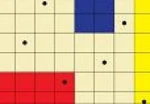Alexey Ustinov recently pointed out that Korobov invented the component-by-component construction of lattice rules in 1959. He provided two references for this result, namely
- @article {MR0104086,
AUTHOR = {Korobov, N. M.},
TITLE = {Approximate evaluation of repeated integrals},
JOURNAL = {Dokl. Akad. Nauk SSSR},
FJOURNAL = {Doklady Akademii Nauk SSSR},
VOLUME = {124},
YEAR = {1959},
PAGES = {1207–1210},
} - Theorem 18 on page 120 in Korobov’s book from 1963:
@book {MR0157483,
AUTHOR = {Korobov, N. M.},
TITLE = {Teoretiko-chislovye metody v priblizhennom analize},
PUBLISHER = {Gosudarstv. Izdat. Fiz.-Mat. Lit., Moscow},
YEAR = {1963},
PAGES = {224},
}
In this post I provide a (rough) translation of the results of Korobov (I do not know Russian, so I only understand the formulae). Indeed, as can be seen below, Korobov used the algorithm which is now called component-by-component construction (and which was re-invented much later by Sloan and Reztsov in Sloan, I. H.; Reztsov, A. V. Component-by-component construction of good lattice rules. Math. Comp. 71 (2002), no. 237, 263–273). He also proved that lattice rules constructed component-by-component achieve the optimal rate of convergence of the integration error for functions in the class (i.e., he showed that
where
is the number of quadrature points).
Unfortunately many authors were not aware of Korobov’s result, hence Korobov has not received due credit for this result. To rectify this situation somewhat (and help make authors aware of Korobov’s result), we provide the details of Korobov’s result here. Continue reading


